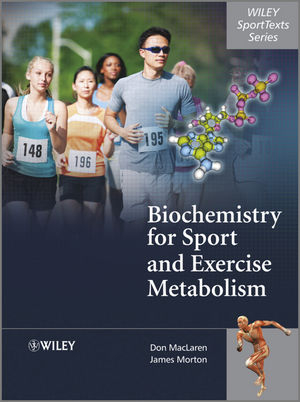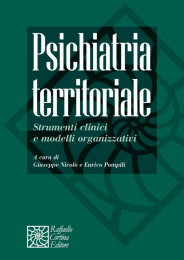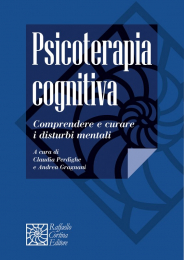Non ci sono recensioni
How do our muscles produce energy for exercise and what are the underlying biochemical principles involved? These are questions that students need to be able to answer when studying for a number of sport related degrees. This can prove to be a difficult task for those with a relatively limited scientific background. Biochemistry for Sport and Exercise Metabolism addresses this problem by placing the primary emphasis on sport, and describing the relevant biochemistry within this context.
The book opens with some basic information on the subject, including an overview of energy metabolism, some key aspects of skeletal muscle structure and function, and some simple biochemical concepts. It continues by looking at the three macromolecules which provide energy and structure to skeletal muscle - carbohydrates, lipids, and protein. The last section moves beyond biochemistry to examine key aspects of metabolism - the regulation of energy production and storage. Beginning with a chapter on basic principles of regulation of metabolism it continues by exploring how metabolism is influenced during high-intensity, prolonged, and intermittent exercise by intensity, duration, and nutrition.
Key Features:
- A clearly written, well presented introduction to the biochemistry of muscle metabolism.
- Focuses on sport to describe the relevant biochemistry within this context.
- In full colour throughout, it includes numerous illustrations, together with learning objectives and key points to reinforce learning.
Biochemistry for Sport and Exercise Metabolism will prove invaluable to students across a range of sport-related courses, who need to get to grips with how exercise mode, intensity, duration, training status and nutritional status can all affect the regulation of energy producing pathways and, more important, apply this understanding to develop training and nutrition programmes to maximise athletic performance.
One: Basic Muscle Physiology and Energetics 1
1 Energy sources for muscular activity 3
1.1 Adenosine triphosphate: the energy currency 3
1.2 Energy continuum 4
1.3 Energy supply for muscle contraction 4
1.4 Energy systems and running speed 7
1.5 Why can't a marathon be sprinted? 7
1.6 Energy sources and muscle 8
1.7 Can muscle use protein for energy? 9
1.8 Key points 10
2 Skeletal muscle structure and function 11
2.1 Skeletal muscle structure 12
2.1.1 Gross anatomical structure 12
2.1.2 The muscle fibre 13
2.2 Muscle contraction 18
2.2.1 Propagation of the action potential 18
2.2.2 Excitation-contraction coupling 18
2.2.3 The sliding filament mechanism 20
2.3 Muscle fibre types 21
2.3.1 General classification of muscle fibres 21
2.3.2 Muscle fibre distribution 23
2.3.3 Muscle fibre recruitment 24
2.4 Muscles in action 26
2.4.1 Types of muscle contraction 26
2.4.2 The twitch contraction 26
2.4.3 The length-tension relationship 27
2.4.4 Tetanus contractions 27
2.4.5 Force-velocity relationship 28
2.4.6 Muscle fatigue 29
2.5 Key points 29
3 Biochemical concepts 31
3.1 Organization of matter 32
3.1.1 Matter and elements 32
3.1.2 Atoms and atomic structure 32
3.1.3 Atomic number and mass number 34
3.1.4 Atomic mass 34
3.1.5 Ions, molecules, compounds and macronutrients 34
3.2 Chemical bonding 35
3.2.1 Ionic bonds 36
3.2.2 Covalent bonds 36
3.2.3 Molecular formulae and structures 38
3.2.4 Functional groups 39
3.3 Chemical reactions, ATP and energy 40
3.3.1 Energy 40
3.3.2 ATP 41
3.3.3 Units of energy 42
3.3.4 Types of chemical reactions 43
3.4 Water 45
3.4.1 General functions of water 45
3.4.2 Water as a solvent 46
3.5 Solutions and concentrations 46
3.6 Acid-base balance 47
3.6.1 Acids, bases and salts 47
3.6.2 pH Scale 48
3.6.3 Buffers 49
3.7 Cell structure 49
3.7.1 The plasma membrane 50
3.7.2 The nucleus 51
3.7.3 Cytoplasm and organelles 51
3.8 Key points 53
Two: Fundamentals of Sport and Exercise Biochemistry 55
4 Proteins 57
4.1 Protein function 58
4.1.1 General protein function 59
4.2 Amino acids 62
4.2.1 Amino acid structure 62
4.3 Protein structure 62
4.3.1 Primary structure 62
4.3.2 Secondary structure 65
4.3.3 Tertiary structure 65
4.3.4 Quaternary structure 65
4.4 Proteins as enzymes 67
4.4.1 Mechanisms of enzyme action 67
4.4.2 Factors affecting rates of enzymatic reactions 68
4.4.3 Coenzymes and cofactors 70
4.4.4 Classification of enzymes 70
4.4.5 Regulation of enzyme activity 72
4.5 Protein turnover 73
4.5.1 Overview of protein turnover 73
4.5.2 DNA structure 73
4.5.3 Transcription 74
4.5.4 The genetic code 74
4.5.5 Translation 76
4.6 Amino acid metabolism 78
4.6.1 Free amino acid pool 79
4.6.2 Transamination 79
4.6.3 Deamination 80
4.6.4 Branched chain amino acids 82
4.6.5 Glucose-alanine cycle 82
4.6.6 Glutamine 82
4.6.7 The urea cycle 85
4.7 Key points 85
5 Carbohydrates 87
5.1 Relevance of carbohydrates for sport and exercise 88
5.2 Types and structure of carbohydrates 90
5.2.1 Monosaccharides 90
5.2.2 Disaccharides and polysaccharides 91
5.3 Metabolism of carbohydrates 92
5.3.1 Glycogenolysis 93
5.3.2 Glycolysis 95
5.3.3 Lactate metabolism 98
5.3.4 The 'link' reaction; production of acetyl-CoA 98
5.3.5 The TCA (or Krebs) cycle 98
5.3.6 Electron transport chain 98
5.3.7 Oxidative phosphorylation 100
5.3.8 Calculation of ATP generated in glucose oxidation 101
5.3.9 Overview of glucose oxidation 102
5.3.10 Fructose metabolism 102
5.3.11 Gluconeogenesis 102
5.3.12 Glycogenesis 103
5.4 Key points 107
6 Lipids 109
6.1 Relevance of lipids for sport and exercise 110
6.2 Structure of lipids 112
6.2.1 Classification of lipids 112
6.2.2 Compound lipids 115
6.2.3 Derived lipids 115
6.3 Metabolism of lipids 115
6.3.1 Lipolysis 115
6.3.2 ß-oxidation 118
6.3.3 Ketone body formation 119
6.3.4 Formation of fatty acids 119
6.3.5 Triglyceride synthesis 122
6.4 Key points 124
Three: Metabolic Regulation in Sport and Exercise 127
7 Principles of metabolic regulation 129
7.1 How are catabolic and anabolic reactions controlled? 130
7.2 Hormones 130
7.3 Peptide hormones, neurotransmitters and regulation 133
7.3.1 Adrenaline activation of glycogenolysis 134
7.3.2 Adrenaline activation of lipolysis 135
7.3.3 Insulin activation of glycogen synthase 135
7.3.4 Insulin inhibition of lipolysis 137
7.3.5 Insulin stimulation of protein synthesis 137
7.4 Steroid hormones and regulation 138
7.5 Allosteric effectors 140
7.5.1 Regulation of glycogen phosphorylase 140
7.5.2 Regulation of PFK 140
7.5.3 Regulation of PDH 140
7.5.4 Regulation of CPT1 142
7.5.5 AMPK as a metabolic regulator 142
7.6 Key points 144
8 High-intensity exercise 145
8.1 Overview of energy production and metabolic regulation in high-intensity exercise 145
8.1.1 Definition of high-intensity exercise 145
8.1.2 Energy production during high-intensity exercise 146
8.1.3 Evidence of energy sources used in HIE 148
8.1.4 Metabolic regulation during high-intensity exercise 152
8.2 Effects of exercise duration 152
8.3 Effects of nutritional status 153
8.3.1 Can nutritional ergogenic aids help HIE? 154
8.4 Effects of training 155
8.5 Mechanisms of fatigue 157
8.5.1 Reduced ATP 158
8.5.2 Reduced PCr 159
8.5.3 Increased Pi 159
8.5.4 Lactate and H+ 160
8.6 Key points 161
9 Endurance exercise 163
9.1 Overview of energy production and metabolic regulation in endurance exercise 164
9.1.1 Definition and models of endurance exercise 164
9.1.2 Energy production in endurance exercise 164
9.1.3 Overview of metabolic regulation in endurance exercise 165
9.2 Effects of exercise intensity 166
9.2.1 CHO metabolism 166
9.2.2 Lipid metabolism 168
9.3 Effects of exercise duration 172
9.4 Effects of nutritional status 174
9.4.1 CHO-loading and muscle glycogen availability 174
9.4.2 Fat-loading strategies 176
9.4.3 Pre-exercise and during-exercise CHO ingestion 178
9.4.4 Pre-exercise FFA availability 181
9.5 Effects of training status 183
9.5.1 CHO metabolism 183
9.5.2 Lipid metabolism 184
9.5.3 Protein metabolism 188
9.6 Mechanisms of fatigue 189
9.7 Key points 192
10 High-intensity intermittent exercise 195
10.1 Overview of energy production in intermittent exercise 196
10.1.1 Definition and models of intermittent exercise 196
10.1.2 Energy systems utilized in intermittent exercise 197
10.2 Metabolic regulation in intermittent exercise 197
10.3 Effects of manipulating work-rest intensity and ratio 202
10.4 Effects of nutritional status 206
10.4.1 Muscle glycogen availability 207
10.4.2 Pre-exercise CHO ingestion 207
10.4.3 CHO ingestion during exercise 209
10.5 Muscle adaptations to interval training 210
10.6 Mechanisms of fatigue 215
10.6.1 Carbohydrate availability 216
10.6.2 PCr depletion 217
10.6.3 Acidosis 218
10.6.4 Extracellular potassium 220
10.6.5 Reactive oxygen species (ROS) 221
10.6.6 Pi accumulation and impaired Ca2+ release 223
10.7 Key points 224
References and suggested readings 227
Index 241




